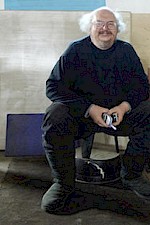How Sensitive Are Your Speakers?
I started reading Proust last year and discovered I was not sensitive enough to care about the upper-middle class characters from France’s 1800s to keep me engaged through over 4000 pages of narrative. But, that is a different kind of sensitivity…
Sensitivity and efficiency are two speaker specifications that are often used interchangeably - although they are a bit different. In the consumer speaker industry, there is no “standard” that all manufacturers use. Both terms are used to indicate how loudly a speaker will play under specified conditions. Once again, different manufacturers use different conditions; so, it becomes comparing apples to oranges…
Neither term is a measure of speaker quality, but rather, the terms indicate the quantity of sound you will get from a given amplifier and speaker combination. If you are considering a very low-power amplifier (like a 3 watt triode) and want the same output you could get from a high-power amplifier (like a 300 watt unit) you would need a speaker with a 20 dB higher sensitivity or efficiency rating when using the low-power amplifier. As we discussed in an earlier blog, if both speakers have the same low frequency cutoff and have similar designs, the speaker with +20dB rating will be about 100 times bigger; and that could be a very big speaker. Speakers for stadiums are very big and have very high sensitivity to produce a very large amount of sound.
Sensitivity
Sensitivity is how loudly a speaker will play when driven with a given (typically 2.8 volt) input. This is usually the voltage chosen since it would require 1 watt of power if the speaker was a pure 8 ohm load. Most speakers are not pure 8 ohm loads, but most good solid-state electronics are happy to provide the 2.8 volt drive into 3 to 16 ohms. So, sensitivity makes it easy to compare how loudly a speaker will play at a given setting of your volume knob. The speaker with the lower ohms rating will just draw more power from your amplifier.
Efficiency
Efficiency is the ratio of acoustic power (in watts) produced by a speaker to the electrical power put into the speaker (in watts). While this can be expressed as a percentage (0.5% is typical for large acoustic suspension speakers, such as the classic Large Advent and similar designs) it is more usually expressed as a sound pressure level (SPL) at one meter when 1 watt is going into the speaker, which would be about 89 dB in the Advent’s case.
To add to the confusion, the measurements for the ratings are often taken in open areas like an anechoic chamber, but speakers are used in rooms with floors, walls and ceilings. Each of these surfaces will make the speaker seem more sensitive at the lower frequencies (depending on placement). So, we get into another apples-to-oranges comparison unless you know the details behind the claims.
In Conclusion
Brand-to-brand comparisons can be confusing; but comparing within a brand is usually useful. At Ohm we build the best speakers we can make - for small, medium or large rooms, instead of having a good-better-best lineup. Our speakers for small rooms are the least sensitive as we want the deepest bass from as small a cabinet as possible. Moving up in price, as they are designed for bigger rooms (and use bigger cabinets), Ohm speakers get more sensitive. This allows similar sized amplifiers to be used with most models. None are super-sensitive like stadium speakers; but we don’t expect them to be used outdoors.
Enjoy & Good Listening!
See You July 5th
– John
Subscribe to Ohm News & Views to get the latest posts in your inbox
John Strohbeen Author
John Strohbeen was the President and Chief Engineer of Ohm Acoustics from 1978-2023.


